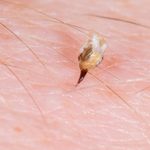
Identifying and Treating Common Bug Bites
Bug bites can be a nuisance, but they can also pose serious health risks if not treated properly. Understanding the different types of bug bites and how to identify them is crucial for effective treatment. Below are detailed insights on various common bug bites, their symptoms, and recommended treatments.
Bees
Bees are often seen as aggressive, but they typically only sting when provoked. If you are stung by a bee, you will likely notice a hive-like pink bump that itches. The stinger may still be visible, so it's important to remove it carefully. Using a credit card to gently scrape it out is recommended, as pinching or using tweezers could push more venom into the skin.
Treatment: Cool soaks, calamine lotion, oral antihistamines like Benadryl, and meat tenderizer (which contains an enzyme called papain) can help reduce pain and inflammation. If you experience difficulty breathing, swelling, or other severe symptoms, seek immediate medical attention.
Ticks
Ticks are known for transmitting diseases such as Lyme disease, ehrlichiosis, and Rocky Mountain spotted fever. They are often difficult to detect because they don’t always cause immediate symptoms. A rash, which can appear as a bulls-eye pattern, may develop within days of a tick bite. However, the rash might not always look like a classic bulls-eye, making identification challenging.
Treatment: Prompt treatment with a 20-day course of oral antibiotics is essential. Not all tick bites require treatment, but it's important to consult a healthcare provider to assess the risk of infection.
Mosquitoes
Mosquitoes are prevalent during warmer months and can transmit serious diseases like West Nile virus, Chikungunya, and Zika. Their bites typically appear as small, puffy white bumps with a red dot in the center.
Treatment: Avoid scratching the bite to prevent infection. Applying a cold pack, aloe, or cortisone cream can help reduce itching and discomfort.
Fleas
Fleas can cause painful and irritating bites, especially around the ankles and calves. They can also transmit tapeworms. Preventing fleas on pets is key to avoiding infestations.
Treatment: Use topical cortisone creams and cool compresses to relieve itching. Consult a veterinarian for flea control and consider professional pest control if an infestation is suspected.
Brown Recluse Spider
Brown recluse spiders are shy but can be dangerous if bitten. Their bites can lead to severe reactions, including necrosis of the tissue.
Treatment: Seek medical attention immediately if a brown recluse spider bite is suspected, as it may require surgical removal of affected tissue.
Bed Bugs
Bed bug bites typically appear as linear clusters on exposed skin, often referred to as “breakfast, lunch, and dinner” lesions. They usually resolve on their own after a few days.
Treatment: Over-the-counter hydrocortisone ointment can help reduce inflammation and itching. Avoid scratching to prevent further irritation.
Chiggers
Chiggers are arachnids that bite humans, causing itchy red bumps. They are commonly found in grassy areas and are most active in warm weather.
Treatment: Cool showers, washing the area with soap and water, and applying cortisone cream or products like After Bite can provide relief. For sensitive skin, After Bite Kids is a gentle alternative.
Black Widow Spider
Black widow spiders are found in warm, dry areas and have a distinctive red hourglass shape on their abdomen. Their bites are extremely painful and can cause muscle stiffness, nausea, and even paralysis.
Treatment: Immediate medical attention is necessary, especially for children. Wash the area with cold water and apply ice until help arrives.
Fire Ants
Fire ants are aggressive and deliver painful stings that result in swollen, red spots resembling pus-filled pimples. They are commonly found in the southeastern and southwestern United States.
Treatment: Treat fire ant bites similarly to chigger bites—using cool showers, soap and water, and topical treatments like After Bite.
Natural Itch Relief
Severe itching from bug bites can be frustrating. Essential oils such as citrus, peppermint, and eucalyptus can offer soothing relief. Other natural remedies include a baking soda paste or a warm bath with magnesium powder. These methods can help calm the skin and reduce discomfort without harsh chemicals.